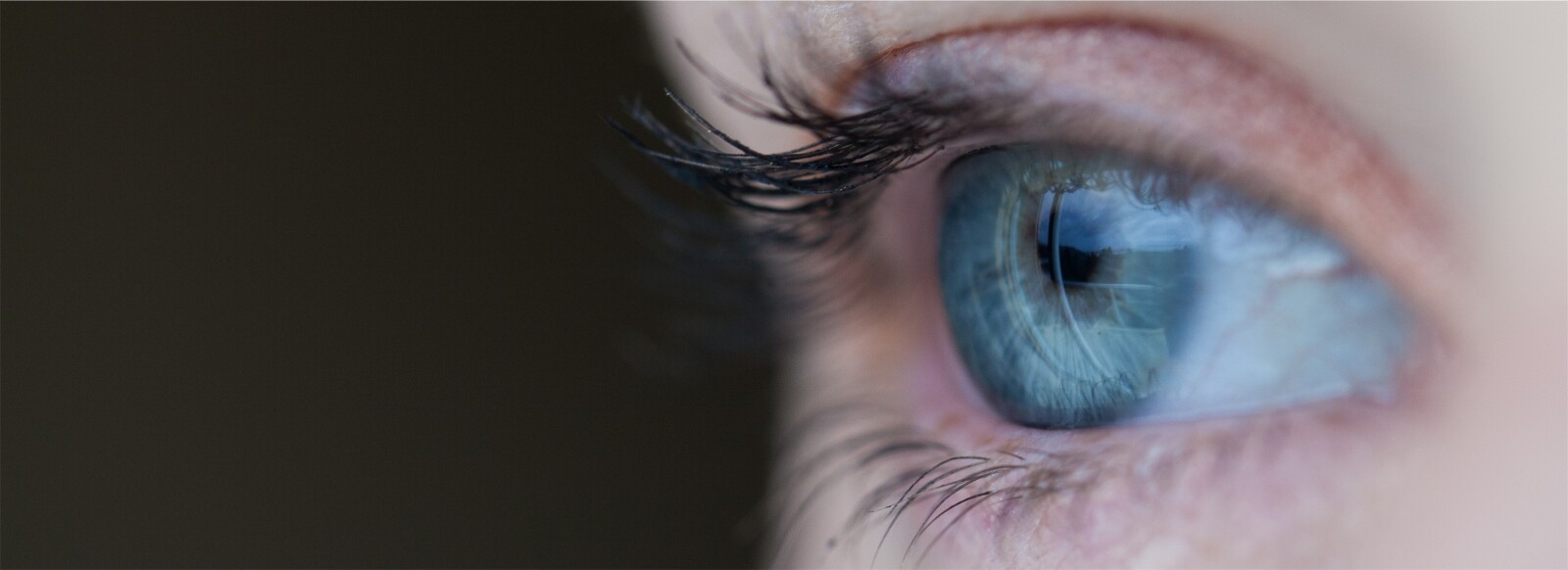Maculopathy
Maculopathy, a significant cause of vision loss, is a condition shrouded in complexity. This article aims to illuminate the reader on its various forms, specifically age-related macular degeneration, the leading cause in the U.S. We delve into the symptoms, stages, and treatments, and offer practical advice for living with this condition. Our goal is to demystify maculopathy, offering a comprehensive understanding to empower those affected, and their loved ones.

Key Takeaways
- Maculopathy is a disease that affects the macula, leading to central vision loss.
- Age-related macular degeneration (AMD) is the most common type of maculopathy and the leading cause of vision loss in the US.
- There are different types of maculopathy, including hereditary maculopathy and diabetic maculopathy.
- Symptoms of macular degeneration include blurry spots in the center of vision, difficulty reading, and distorted objects.
Understanding Maculopathy: An Overview
While there are different types of maculopathy, such as age-related macular degeneration (AMD), hereditary maculopathy, and diabetic maculopathy, they all lead to a common outcome - central vision loss. Current research is essential in understanding maculopathy, its causes, and potential treatment advancements. The impact of maculopathy on the quality of life can be significant, affecting daily activities such as reading and driving. The advent of future advancements in disease management and therapy is a beacon of hope for those affected. The focus of ongoing research includes exploring gene therapy for hereditary forms and improving treatment options for AMD and diabetic maculopathy. The ultimate goal is not just to manage but to prevent or restore vision loss, enhancing the quality of life for patients.
Unveiling the Types of Maculopathy
To delve into the types of maculopathy, we must first recognize that this condition comes in various forms, and each possesses unique characteristics and causes. Age-related macular degeneration (AMD), diabetic maculopathy, and hereditary forms are the most common types. Preventing maculopathy focuses on mitigating risk factors such as obesity, high blood pressure, and unhealthy dietary habits. As for the treatment, the latest research on maculopathy treatments has brought forth promising options. For AMD, advancements in the use of AREDS and AREDS2 supplements have shown potential in slowing down the progression. Wet AMD and diabetic maculopathy can be managed with anti-VEGF drugs, corticosteroids, laser treatment, and eye surgery. However, the cornerstone of maculopathy management remains early detection and regular monitoring.
Age-Related Macular Degeneration: A Closer Look
--v 5.2 --ar 16:9
Interestingly, age-related macular degeneration (AMD) is the most prevalent form of maculopathy, and it predominantly affects individuals aged 50 and above. AMD, a progressive disease, leads to the deterioration of the macula, the part of the retina responsible for central vision. Preventing maculopathy, particularly AMD, entails lifestyle modifications such as maintaining a healthy diet, regular exercise, and avoiding smoking. Concerning treatment, the latest research on maculopathy treatments presents promising results. Current therapies focus on slowing the progression of the disease and improving the quality of life. These include anti-VEGF therapy for wet AMD and supplementation with specific vitamins and minerals. Further research is underway to develop more efficient, targeted treatments to manage this vision-threatening condition.
Exploring the Stages of Age-Related Macular Degeneration
Delving into the progression of age-related macular degeneration, it becomes evident that this condition evolves through several stages, and understanding these stages can provide valuable insights into its diagnosis and management. Early stages are often symptomless, but as the disease progresses, maculopathy significantly impacts daily activities such as reading, driving, and recognizing faces. Intermediate stages may present mild vision loss, whereas advanced stages can lead to severe vision impairment. Research has highlighted the role of genetics in age-related macular degeneration, with certain genes linked to a higher risk of developing the condition. Understanding these stages and genetic influences can aid in early detection, and potentially slow the progression, mitigating the debilitating impact of maculopathy on daily activities.
Symptoms Associated With Maculopathy
Patients with maculopathy often experience a range of symptoms, and these can include blurred or distorted vision, difficulty reading, and trouble recognizing faces. Maculopathy in children, although less common, can present similar symptoms, significantly affecting their learning and social development. These symptoms can be particularly distressing as they interfere with everyday activities and can lead to a decreased quality of life. In light of this, new research on maculopathy treatments is constantly being conducted. The aim is to improve the current management strategies and potentially find a cure for this vision-threatening disease. Some promising developments include gene therapy and stem cell treatments. Although these are still in the experimental stages, they offer hope for future advancements in the treatment of maculopathy.
Unpacking the Causes of Maculopathy
Several factors contribute to the development of maculopathy, ranging from genetic predispositions to lifestyle choices and underlying health conditions. The most prevalent risk factors include age, family history, smoking, obesity and hypertension. Furthermore, specific forms of maculopathy, such as diabetic maculopathy, are linked to underlying health conditions like diabetes. Prevention strategies often involve lifestyle modifications, such as maintaining a healthy weight, regular exercise and cessation of smoking. The latest research on maculopathy treatments is promising, with advances in gene therapy and new drug formulations. For instance, anti-VEGF therapy has shown significant efficacy in managing wet age-related macular degeneration. Regular eye examinations are also crucial for early detection and timely intervention.
Treatment Options for Early AMD
In the early stages of age-related macular degeneration (AMD), there are several treatment options that, if implemented timely, can potentially slow the progression of the disease. Preventive measures are crucial in this stage. These primarily involve lifestyle modifications such as maintaining a balanced diet rich in leafy greens and fish, regular physical activity, and cessation of smoking. Antioxidant vitamin and mineral supplements, like the Age-Related Eye Disease Study (AREDS) formulation, may also be recommended by healthcare professionals. Regular eye examinations for early detection and prompt treatment are essential. Moreover, wearing sunglasses to protect the eyes from harmful UV light can be beneficial. While these steps don't guarantee the prevention of AMD, they significantly contribute to eye health and potentially delay the onset of severe AMD.
Late Stage AMD: Possible Therapies
The progression to late-stage Age-Related Macular Degeneration (AMD) necessitates the exploration of various therapeutic strategies to manage the condition and mitigate vision loss. Potential therapies for late-stage AMD include, but are not limited to, anti-VEGF injections, photodynamic therapy, and laser surgery. These treatments aim to slow down the progression of the disease and preserve the remaining vision. There is also a growing interest in the development of novel treatments for late-stage AMD. These include the use of stem cell therapy, gene therapy, and even the implementation of retinal implants. It's important to note that while these therapies show promise, they are still in the experimental stages and further research is needed to determine their long-term efficacy and safety.
Diabetic Maculopathy: Treatment and Management
With a focus on Diabetic Maculopathy, it's essential to delve into the treatment and management strategies available for this specific type of maculopathy. The mainstay of treatment includes strict control of blood sugar levels, blood pressure, and cholesterol. Laser photocoagulation and intravitreal injections of anti-VEGF drugs or corticosteroids are also effective. Preventive strategies involve regular eye screenings and lifestyle modifications. Latest research in diabetic maculopathy treatment is exploring the use of combination therapies and novel drugs to inhibit the progression of the disease. Continuous advancements in treatment modalities and prevention strategies are crucial in managing diabetic maculopathy, reducing the risk of vision loss, and improving the quality of life for those affected.
Testing Procedures for Maculopathy
Several diagnostic procedures exist for detecting maculopathy, and they range from simple visual acuity tests to more complex imaging techniques such as optical coherence tomography and fluorescein angiography. Advancements in maculopathy testing have led to the development of more accurate and precise methods for diagnosis. For instance, the introduction of adaptive optics scanning laser ophthalmoscopy allows for a detailed view of individual photoreceptor cells, thereby aiding in early detection and treatment. Additionally, emerging technologies for maculopathy diagnosis are continuously being researched and developed, such as artificial intelligence algorithms designed to analyze eye imaging data. These advancements and emerging technologies are significant, as they enhance the ability to diagnose maculopathy accurately and promptly, consequently improving patient outcomes.
Monitor Your Visual Health: Tools at Home
Maintaining one's ocular health at home can be facilitated through various tools designed for self-monitoring and early detection of maculopathy symptoms. Home monitoring is critical in managing this condition and can be achieved using certain visual aids. The Amsler grid, for instance, is a simple yet effective tool. It helps identify any distortions or changes in one's central vision, which could indicate disease progression. Visual aids such as magnifiers can assist in daily tasks, reducing the impact of vision loss. Digital platforms also offer apps to assist in home monitoring of visual health. Regular use of these tools, combined with routine eye examinations, promises a proactive approach towards maintaining visual health and managing maculopathy.
Living With Maculopathy: Practical Tips
Despite the challenges presented by maculopathy, there are practical measures and strategies that can be employed, and these can significantly improve the quality of life for individuals living with this condition. Enhancing visibility is a crucial aspect of these strategies, incorporating adaptive methods such as using contrasting colours, magnifiers, and tailored lighting solutions, all designed to maximise the use of remaining vision. Managing the emotional well-being is equally critical. The psychological impact of maculopathy can be overwhelming, hence the importance of seeking professional help when needed. Support groups or counselling can provide a platform for sharing experiences and coping mechanisms. Regular physical activity and a balanced diet also contribute positively to emotional well-being, offering a sense of control over one's health.
Strategies for Reading and Viewing With Maculopathy
How can individuals with maculopathy adapt their reading and viewing habits, and what tools or techniques might assist them in this endeavour? Adapting lifestyle to accommodate maculopathy involves incorporating assistive tools such as magnifiers, e-readers with large print capabilities, and text-to-speech software. Reading glasses with high-powered lenses can also improve reading ability. Lighting adjustments, such as using task lights or daylight bulbs, can enhance visibility. Coping mechanisms include acceptance of the condition and seeking support. Regular breaks during reading or viewing sessions can reduce eye strain. Occupational therapists can provide further strategies tailored to individual needs. Continued research into new technologies and therapies can also provide hope and improved quality of life for those with maculopathy.
Emotional Coping With Maculopathy
Navigating through the emotional challenges associated with maculopathy often requires patients to draw upon inner resources and seek external support. The diagnosis can trigger a range of emotions, including fear, sadness or anger. Embracing positive coping strategies, such as mindfulness and relaxation techniques, can help in managing stress and anxiety. It is also important to maintain open communication with loved ones, as they can provide vital emotional support during difficult times. Joining support groups, whether in person or online, can also offer a sense of community and shared understanding. These groups often provide practical advice, encouragement, and reassurance. Seeking professional help, such as counselling or therapy, can also be beneficial to navigate the emotional landscape of living with maculopathy.
Seeking Professional Advice: Consulting the Experts
Understanding the complexities of maculopathy calls for the expertise of medical professionals who specialize in eye health. When symptoms of maculopathy surface, seeking professional guidance becomes imperative. Consulting experts like ophthalmologists, optometrists, and even occupational therapists can help manage the disease effectively. They can provide accurate diagnosis, treatment options, and suggest coping strategies to improve quality of life. Moreover, these experts can also guide patients on the latest technological advancements in low vision aids. Regular monitoring of the disease's progression is also crucial, and these professionals can perform necessary tests to ensure that. Therefore, consulting experts should not be seen as a last resort but rather an essential step in dealing with maculopathy. Timeous and appropriate professional advice can significantly impact disease management and patient well-being.
Frequently Asked Questions
Is There a Connection Between Maculopathy and Other Eye Diseases Like Glaucoma?
Eye diseases such as glaucoma and maculopathy can coexist, however, they are distinct conditions with different triggers and progression patterns. Glaucoma primarily damages the optic nerve, causing peripheral vision loss, whereas maculopathy affects the macula, leading to central vision loss. While both conditions can lead to blindness, there isn't a direct causal link between maculopathy triggers and glaucoma progression. Both diseases require separate management strategies.
Can Children and Young Adults Develop Maculopathy or Is It Strictly Age-Related?
While maculopathy is commonly associated with aging, children and young adults can also develop certain types of this condition. Genetic factors play a significant role in conditions like Stargardt's disease, a hereditary maculopathy. Regardless of age, maculopathy diagnosis methods such as fundus photography and optical coherence tomography are crucial for identifying and managing this vision-threatening disorder. Therefore, maculopathy is not strictly age-related and can affect individuals across different age groups.
Are There Any Experimental Treatments or Therapies for Maculopathy Currently Being Researched?
Experimental treatments for maculopathy currently under research include gene therapy studies and stem cell innovations. Gene therapy studies aim to correct or replace defective genes causing macular degeneration. Meanwhile, stem cell innovations explore the potential of using stem cells to replace damaged cells in the retina. These advancements could potentially revolutionize the treatment of maculopathy, offering hope for improved outcomes and better quality of life for those affected.
How Can Maculopathy Affect Daily Activities Such as Driving or Using Digital Devices?
Navigating daily activities like driving or using digital devices can be likened to walking a tightrope when impacted by vision loss. Maculopathy, by impairing central vision, necessitates significant visual adjustments. Tasks requiring detail, such as reading road signs or small text on screens, may become challenging. However, assistive technology, such as text-to-speech software and high-contrast settings, can offer valuable aid, mitigating some difficulties and enhancing the individual's independence.
Can Lifestyle Changes or Diet Modifications Prevent the Onset of Maculopathy?
Lifestyle changes and diet modifications can indeed play a significant role in preventing the onset of certain diseases. Regular physical activity, for instance, offers numerous health benefits. Nutritional supplements, particularly those rich in antioxidants and zinc, may also aid in maintaining optimal eye health. However, it's crucial to consult a healthcare professional before starting any new diet or supplement regimen to ensure it's safe and suitable for your specific health needs.
Conclusion
In summary, maculopathy, notably age-related macular degeneration, is a significant cause of vision loss, particularly in adults over 50. A range of symptoms, risk factors, and stages characterize the condition. Emphasizing a healthy lifestyle, regular monitoring, and appropriate coping mechanisms can help manage this disease. For instance, a 65-year-old patient managed to slow down the progression of AMD by adopting a balanced diet, regular exercise, and using AREDS2 supplements, demonstrating the importance of proactive disease management.

This post has been generated by AI and was not reviewed by editors. This is Not legal advice. Please consult with an attorney.




